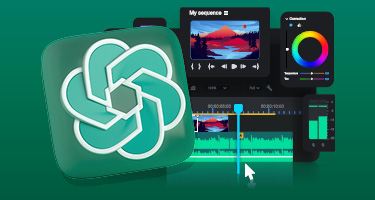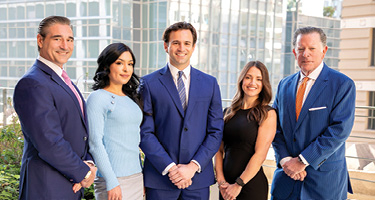The proliferation of Uber and Lyft services has transformed modern transportation while introducing unprecedented legal complexities for collision victims. When accidents involve these rideshare platforms, conventional insurance models often fall short of addressing the intricate liability challenges that arise. Recognizing these complexities becomes vital for anyone harmed in a rideshare collision, whether traveling as a passenger, walking as a pedestrian, or driving another vehicle.
Rising Safety Concerns in the Rideshare Era
Data from the University of Chicago indicates that urban traffic deaths rose by roughly three percent following rideshare service introduction in metropolitan areas. This finding emphasizes the safety challenges created by increased vehicle activity and the distinctive operational demands placed on drivers who maintain extended work schedules while operating mobile applications and navigation technology.
Unlike conventional commercial transport services with standardized insurance coverage, Uber and Lyft function through sophisticated coverage systems that vary according to driver activity status. This structure generates potentially hazardous coverage gaps that may leave injured individuals unclear about compensation pathways. Rideshare accident lawyer consultation proves crucial when addressing these complex insurance arrangements and corporate responsibility questions.
Platform Specific Legal Distinctions
Each dominant rideshare service presents unique legal factors that influence case development approaches. Uber accident lawyer services concentrate on the particular insurance frameworks, information gathering methods, and company procedures specific to Uber operations. Correspondingly, Lyft accident lawyer advocacy tackles the specific obstacles connected with Lyft coverage structures and claim handling protocols.
Platform variations can substantially affect litigation strategy. Uber's dominant market position creates more accident data and legal precedents, while Lyft's smaller market share occasionally complicates efforts to establish comparable settlement standards. Both companies employ experienced legal departments focused on limiting corporate exposure, making skilled car accident lawyer representation critical for safeguarding victim interests.
Multilayered Insurance Structure Analysis
Rideshare coverage operates through several interconnected levels that fluctuate based on driver engagement status. When drivers function with disabled applications, only personal vehicle policies remain active, which generally exclude commercial use entirely. During standby periods when drivers are active on platforms but have not received ride assignments, restricted backup coverage may offer insufficient protection for severe injuries.
After drivers accept ride assignments or begin transporting passengers, comprehensive commercial protection typically engages. Nevertheless, conflicts regularly emerge concerning exact timing and driver status during collision moments. Auto accident attorney investigation must determine precise application status through digital analysis and platform information review to establish relevant coverage levels.
Multiple Defendant Liability Assessment
Rideshare collisions frequently involve various potentially accountable parties beyond primary drivers. Vehicle manufacturers may encounter liability when faulty components contribute to accidents or inadequately protect occupants. Brake failure accidents exemplify situations where manufacturer accountability intersects with rideshare responsibility. Government entities might bear accountability for hazardous road conditions, insufficient traffic management systems, or inadequately engineered intersection designs.
This variety of potential defendants demands thorough investigation and strategic case planning. Personal injury lawyer assessment must examine each possible recovery avenue while evaluating how different insurance policies interact. In wrongful death situations, wrongful death lawyer advocacy encounters additional obstacles in calculating economic and emotional losses across multiple family members.
Detailed Injury Assessment and Documentation
Rideshare vehicle designs and safety equipment affect injury development in specific patterns. Passengers positioned in rear seating may be less inclined to use restraint systems and experience increased susceptibility to particular trauma categories during crashes. Spinal cord injury lawyers regularly address compression injuries and neurological damage caused by rapid acceleration or deceleration forces characteristic of passenger vehicle dynamics.
Brain injury attorneys handle substantial numbers of rideshare related claims, especially involving passengers who contact windows or cabin surfaces during collision sequences. Neck injury lawyers also experience increased caseloads from cervical strain and spinal trauma typical in rideshare rear impact accidents.
Restricted passenger area dimensions create distinctive injury patterns different from conventional vehicle accidents. Back injury attorneys must comprehend how constrained exit access and seat arrangements contribute to lower spine injuries. Spinal cord accident attorneys frequently manage cases where compression trauma and sudden collisions cause vertebral injuries that may produce lasting neurological impairment.
Critical Evidence Collection Procedures
Electronic evidence holds supreme significance in rideshare collision litigation. Trip confirmations, application images, location tracking information, driver correspondence, and platform produced documentation may all prove essential for establishing fault and measuring damages. However, this material exists within exclusive systems managed by Uber and Lyft corporate structures. Securing complete information often demands formal legal discovery procedures that become lengthy and technically challenging.
Conventional evidence sources retain equivalent importance. Observer testimony, traffic monitoring recordings, and police accident documentation provide independent confirmation that may contradict platform produced data. Injury lawyers must respond quickly to secure temporary evidence while concurrently pursuing platform specific information through proper legal procedures and professional testimony.
Technological Innovation and Liability Development
State and municipal regulatory systems for rideshare services continue developing, producing dynamic legal environments. Insurance requirements, driver qualification protocols, and vehicle safety specifications differ considerably among jurisdictions. These regulatory variations influence both collision prevention and post accident legal options available to victims.
Sophisticated driver support systems and developing self driving vehicle technologies introduce additional complexity dimensions. When collisions involve vehicles with automated capabilities, responsibility questions emerge regarding human operator accountability versus technology manufacturer liability. Auto accident lawyers must stay informed about technological advances and their developing legal consequences for case planning and damage collection.
Complete Financial Impact Evaluation
Economic consequences from rideshare collisions reach well beyond immediate treatment costs. Victims may encounter continued rehabilitation expenses, permanent income reduction potential, and essential lifestyle changes. Accident lawyers work with medical professionals and financial analysts to forecast extended consequences and guarantee settlement discussions precisely represent total damage extent.
Intangible damages including physical pain, emotional suffering, and life quality reduction demand careful documentation and presentation. Psychological injuries can prove especially devastating when victims were passengers without influence over situations causing their harm. Internal injury lawyers frequently encounter delayed symptom development requiring prolonged treatment and observation procedures.
Advanced Legal Strategy Implementation
Effective rideshare collision litigation often requires coordination among various legal approaches and defendant parties. Manufacturing liability claims against vehicle producers may advance alongside negligence cases against drivers and coverage conflicts with insurance providers. Personal injury lawyers managing cases with this complexity gain advantage from early thorough assessment and strategic preparation to optimize recovery potential while controlling litigation expenses and scheduling effectively.
Settlement discussions in rideshare cases prove especially complex due to various insurance levels and possible damage sources. Insurance providers commonly attempt responsibility transfer among themselves while reducing individual liability. Personal injury cases require experienced representation capable of managing these situations to guarantee victims obtain appropriate compensation without becoming instruments in insurance company conflicts.
Expert Legal Representation Benefits
Rideshare collisions represent substantial development in transportation liability law, demanding specialized understanding of insurance frameworks, technology platforms, and regulatory structures. Victims encounter distinctive obstacles securing appropriate compensation due to complicated networks of business entities, insurance agreements, and relevant legal principles. Professional legal advice becomes critical not only for immediate insurance claim management but also for protecting extended recovery rights and guaranteeing all accountable parties face responsibility for their contributions to causing injuries.
This content is for informational purposes only and does not constitute legal advice. No attorney-client relationship is formed by reading this article. Laws may vary by jurisdiction. Please consult a qualified attorney licensed in your state for legal guidance specific to your situation.















